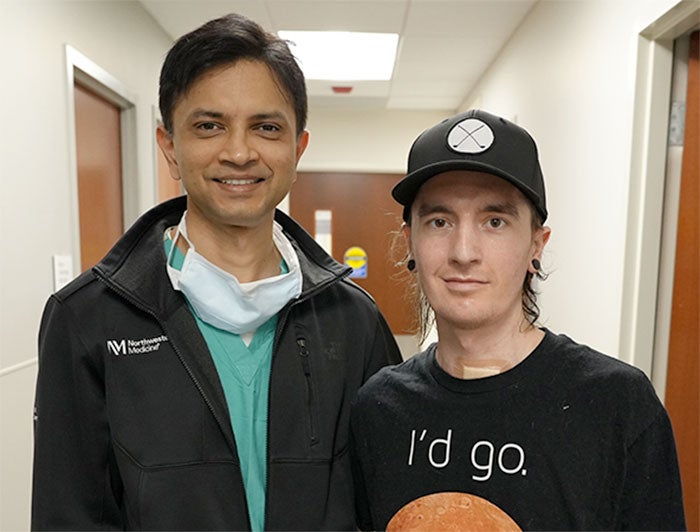Creative repurposing saves heart during double-lung transplant

Old technology — applied in new and novel ways — can still be a lifesaver.
It was for 34-year-old David “Davey” Bauer, a Missouri native whose heavy smoking and vaping drove his lungs to the point of total collapse, with a double-lung transplant the only alternative left. His dire condition was complicated by an infection in his failed lungs that needed to be cleared for the transplant to succeed.
The problem facing surgeons at the Northwestern Medicine Canning Thoracic Institute was that Bauer wouldn’t survive the transplant in his current condition. His body needed to clear the infection before he could be listed for transplant, which meant removing his infected lungs completely. However, with both lungs removed, surgeons needed a way to keep Bauer’s heart from physically collapsing inside his chest cavity.
And that’s where the idea for DD breast implants, a decades-old technology, came in.
“One of our plastic surgeons was very gracious to give us a rapid-fire course on the different types, shapes and sizes of breast implants, so we picked out a couple options and some of them were easier than others to mold inside Davey’s chest, with the DD option being the best fit,” explains Ankit Bharat, MD, chief of Thoracic Surgery and director of Canning Thoracic Institute.
The innovative use of the breast implants did the trick, keeping Bauer alive long enough to allow his body to fight off the infection and clearing him for the transplant of two healthy lungs two days later.
“I never imagined we’d be using DD breast implants to help bridge a patient to lung transplantation, but our team is known for taking on difficult cases and thinking outside the box to save lives,” said Dr. Bharat.
Surgeons says Bauer’s successful outcome shows that many patients who get to the point of needing a lung transplant — but their damaged lungs are making them too sick to get one — can now potentially get transplanted.

